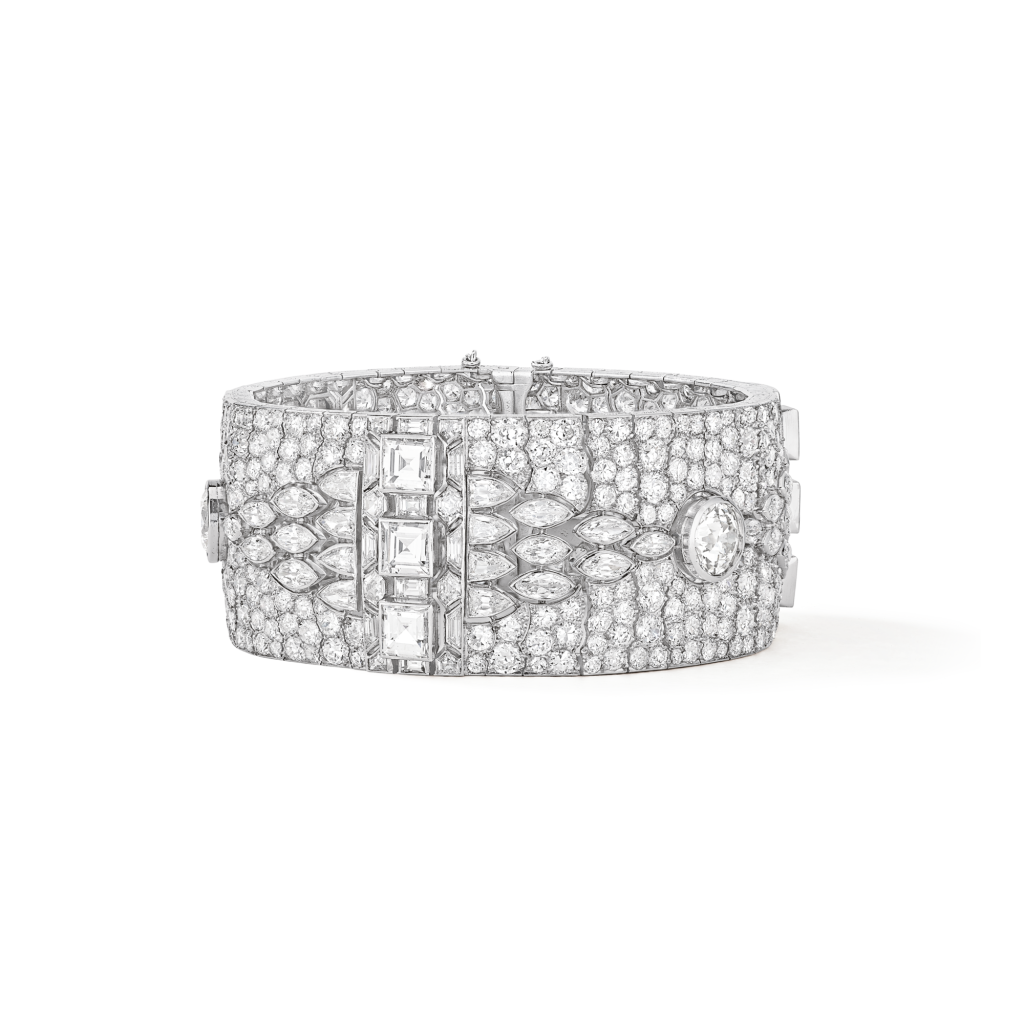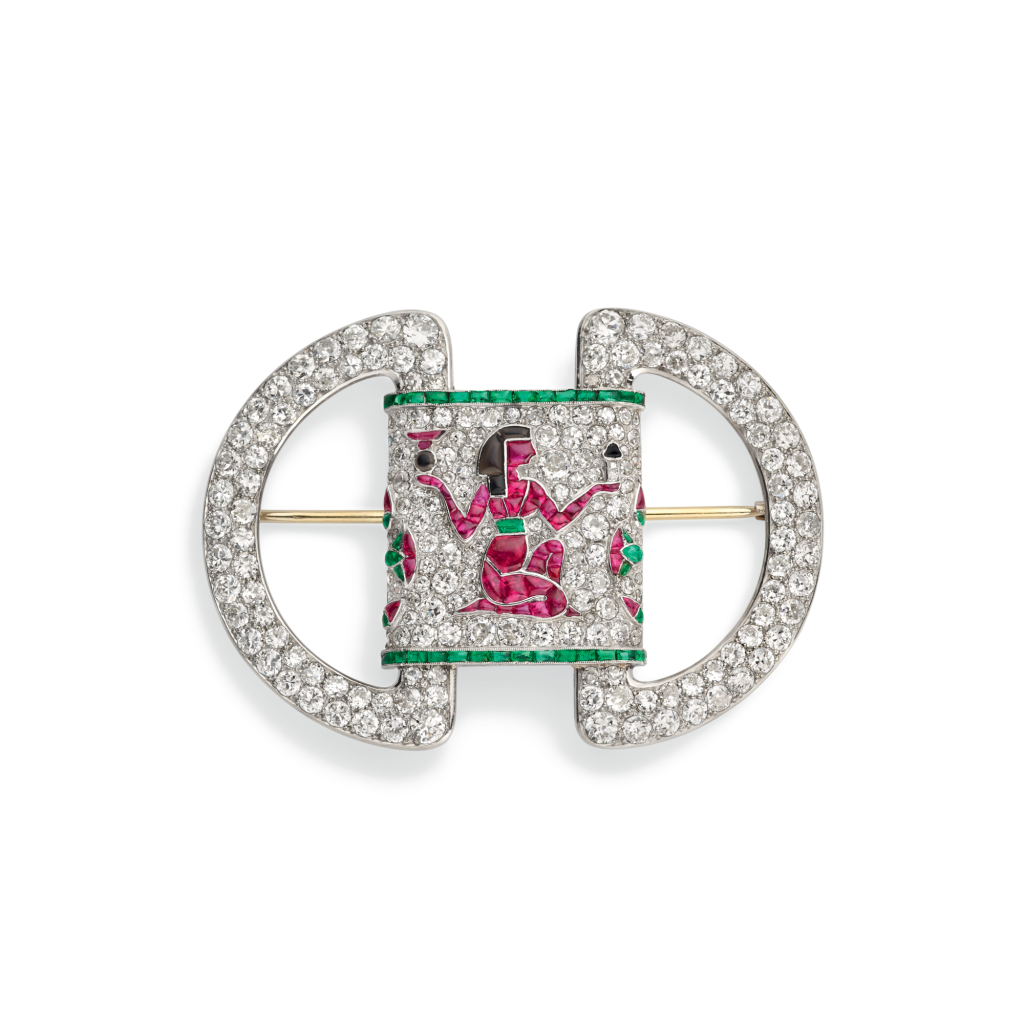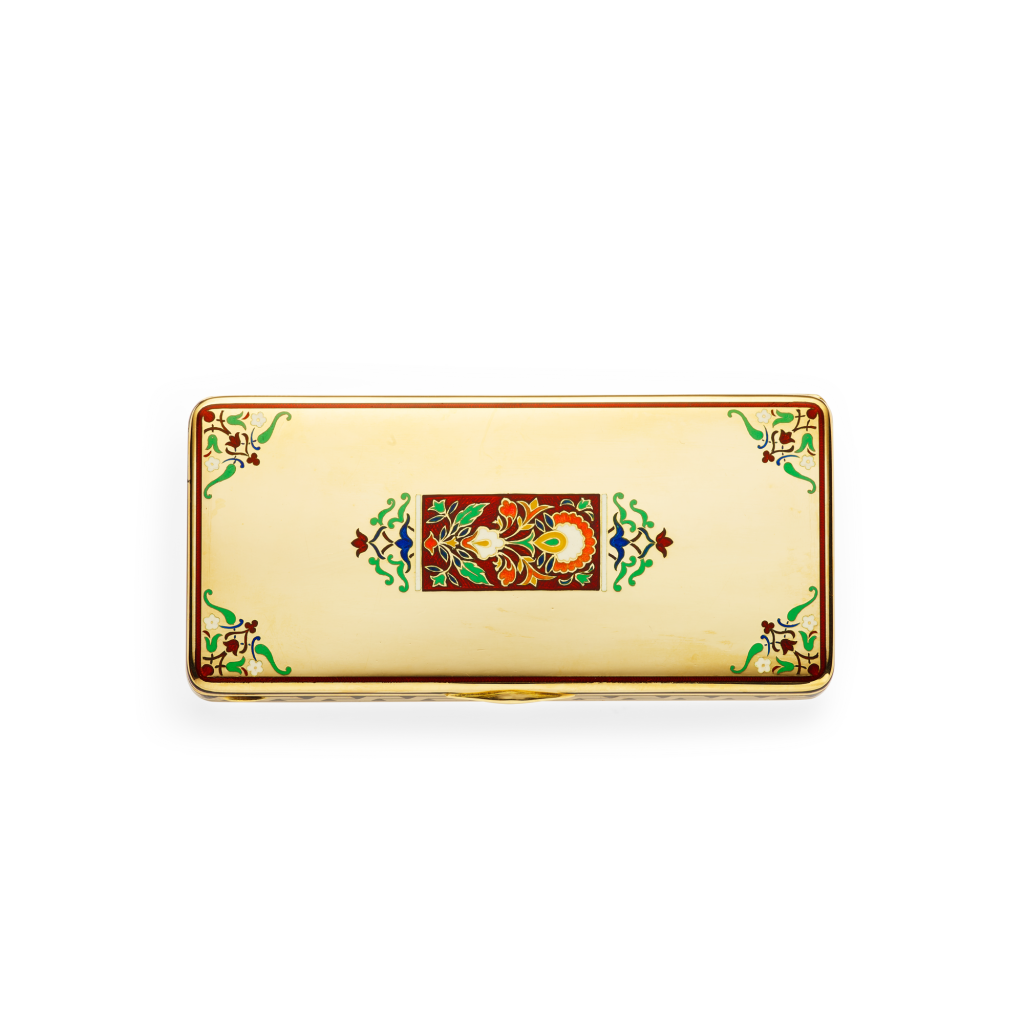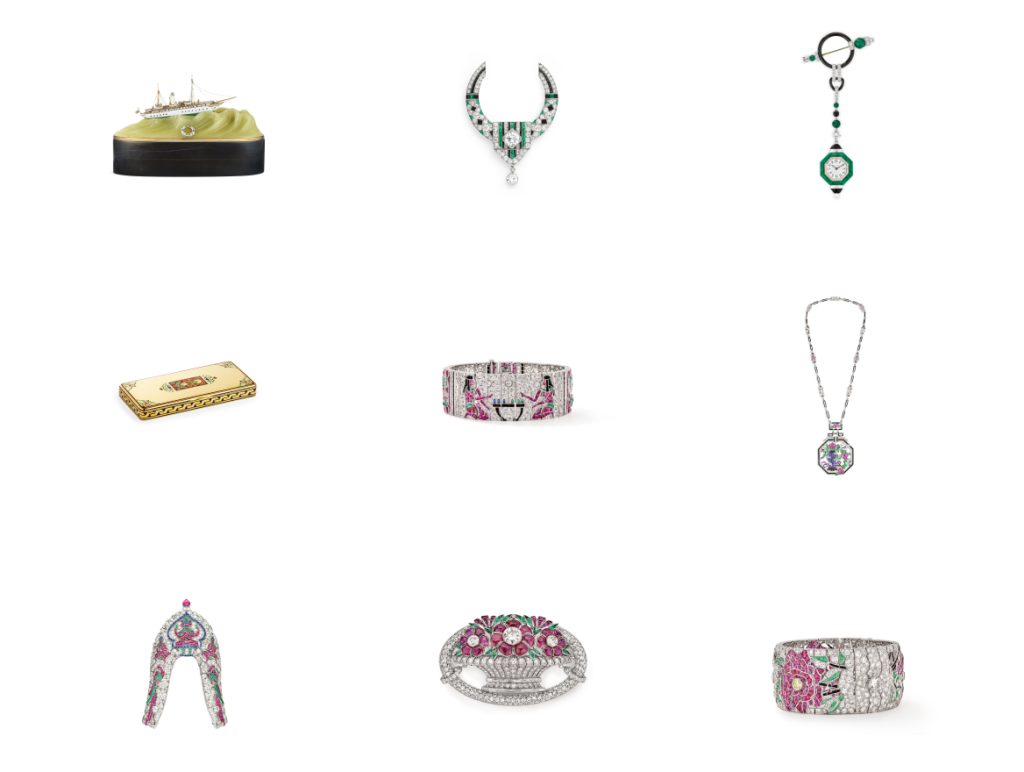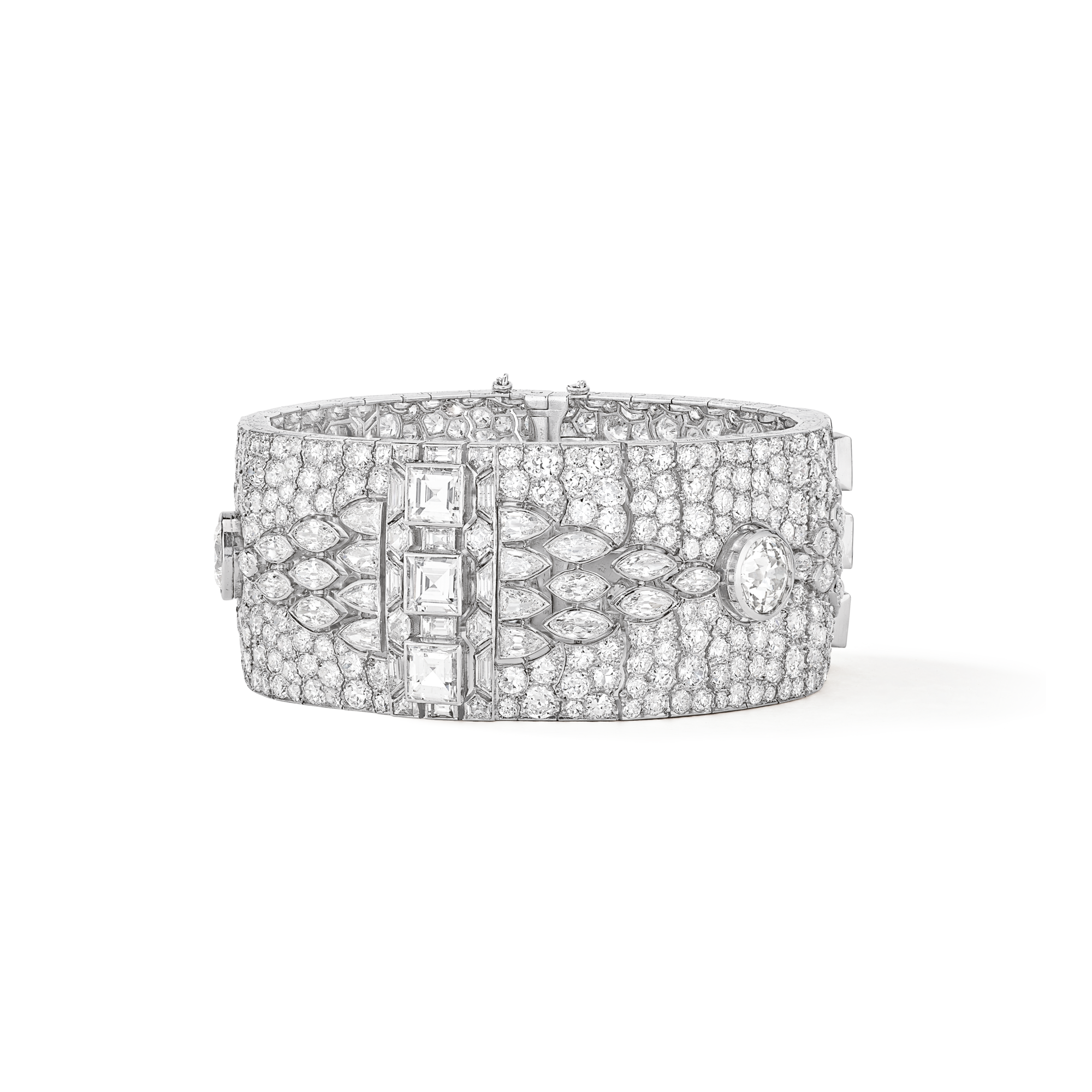
Bracelet

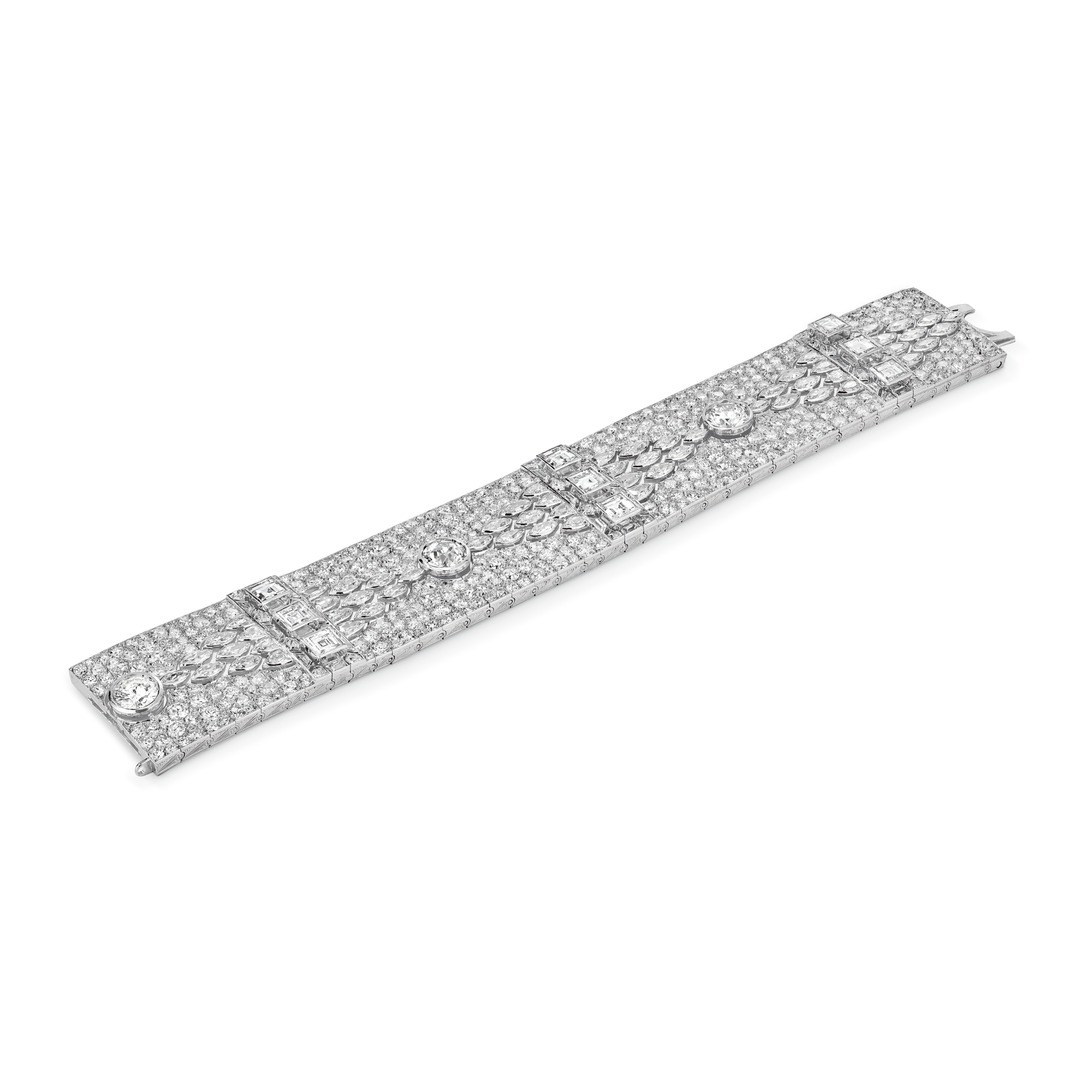
Creation details
- Creation year 1925
- Usage Bracelet
- Dimensions 200 × 28 mm
This piece, created in 1925, perfectly illustrates the aesthetic values advocated by Van Cleef & Arpels at the Exposition internationale des arts décoratifs et industriels modernes held in Paris that same year.
It is an openwork band bracelet typical of the white diamond jewelry of the 1920s, with a monochrome, lace-like pattern of diamonds mounted on platinum. Its composition is strictly geometric and symmetrical, with the same decorative element repeated throughout. Each register revolves around a brilliant-cut diamond flanked by navette-cut diamonds forming a triangle that converges towards this central point. The registers are separated by intermediary motifs composed of three square diamonds surrounded by baguette-cut, and calibrated diamonds of alternating trapezoid and polygonal forms.
Bracelet
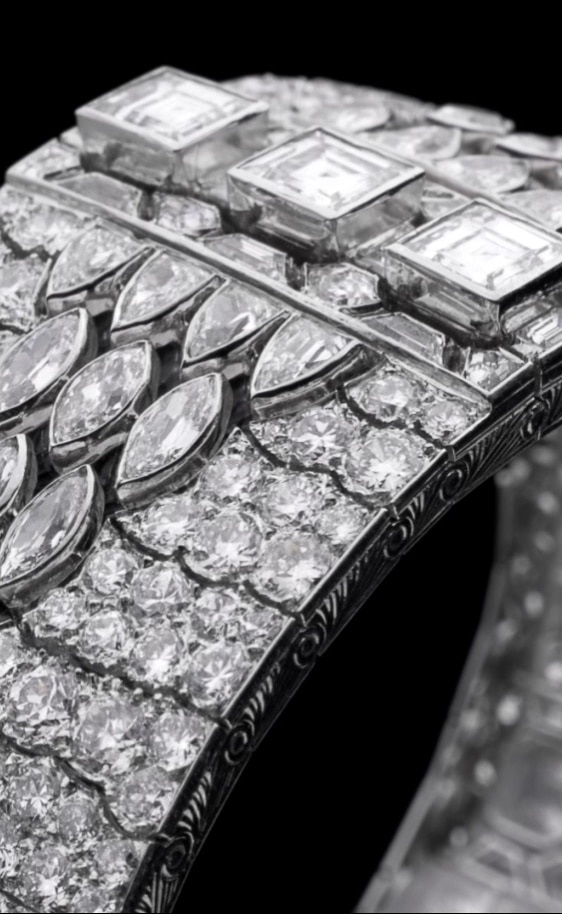
The style of the 1925 Exposition internationale
Although this piece was not one of the works selected for the 1925 Exposition internationale, it can be compared to two gouachés (technical drawings for jewelry), conserved by the Maison, featuring similar bracelets and bearing the stamp of the “President of the XXIV Category, Jewelry,” which suggests that the entire ensemble was originally meant to be presented at this prestigious event. All three bracelets were band bracelets, a form that was particularly commended at the Exposition, not least because it can be worn in different ways—on the wrist or around the upper arm.
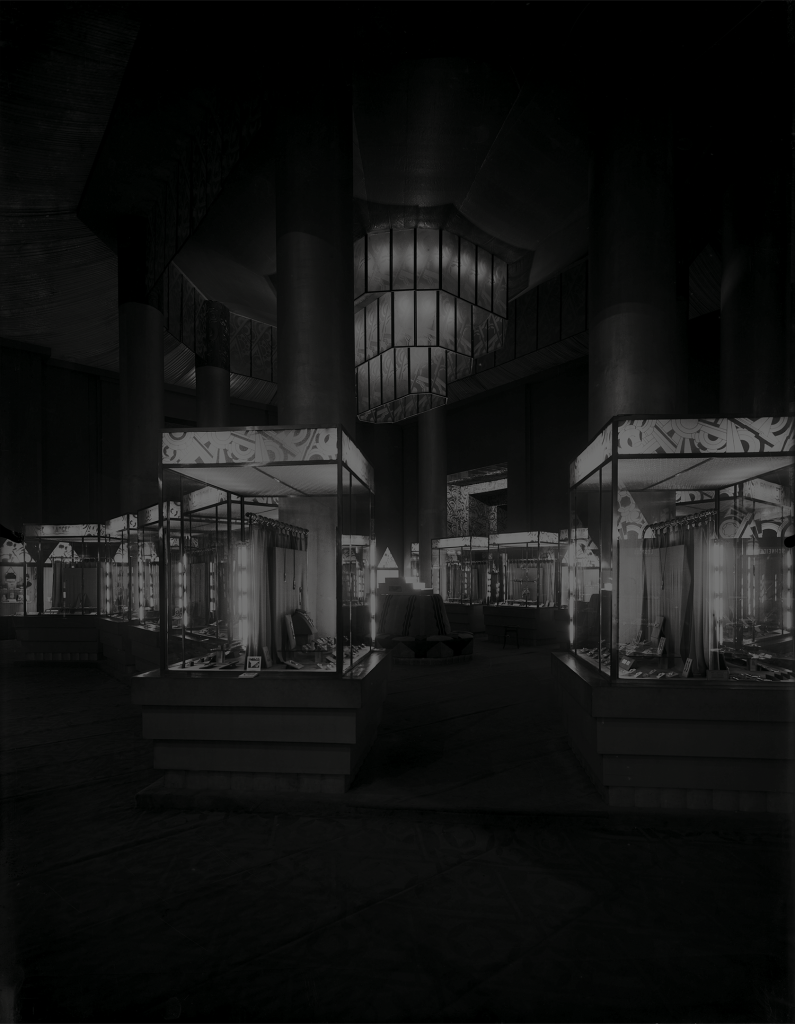
Diamond bracelet trio
The variety of these new cuts (table and baguette) made way for a more sober and strictly geometric decorative vocabulary, as pointed out by the reporter of the [Exposition’s] XXIV Category: “What one seeks […] to find in contemporary jewelry, for it to be at one with today’s fashion, is the simplification of lines and ornamentation.”1[France. Ministère du Commerce, de l’Industrie, des Postes et des Télégraphes], Exposition internationale des arts décoratifs et industriels modernes, Paris 1925: Rapport général. Section artistique et technique, Parure (Classes XX to XXIV), vol. IX (Paris: Librairie Larousse, 1927), 86.

To go deeper
